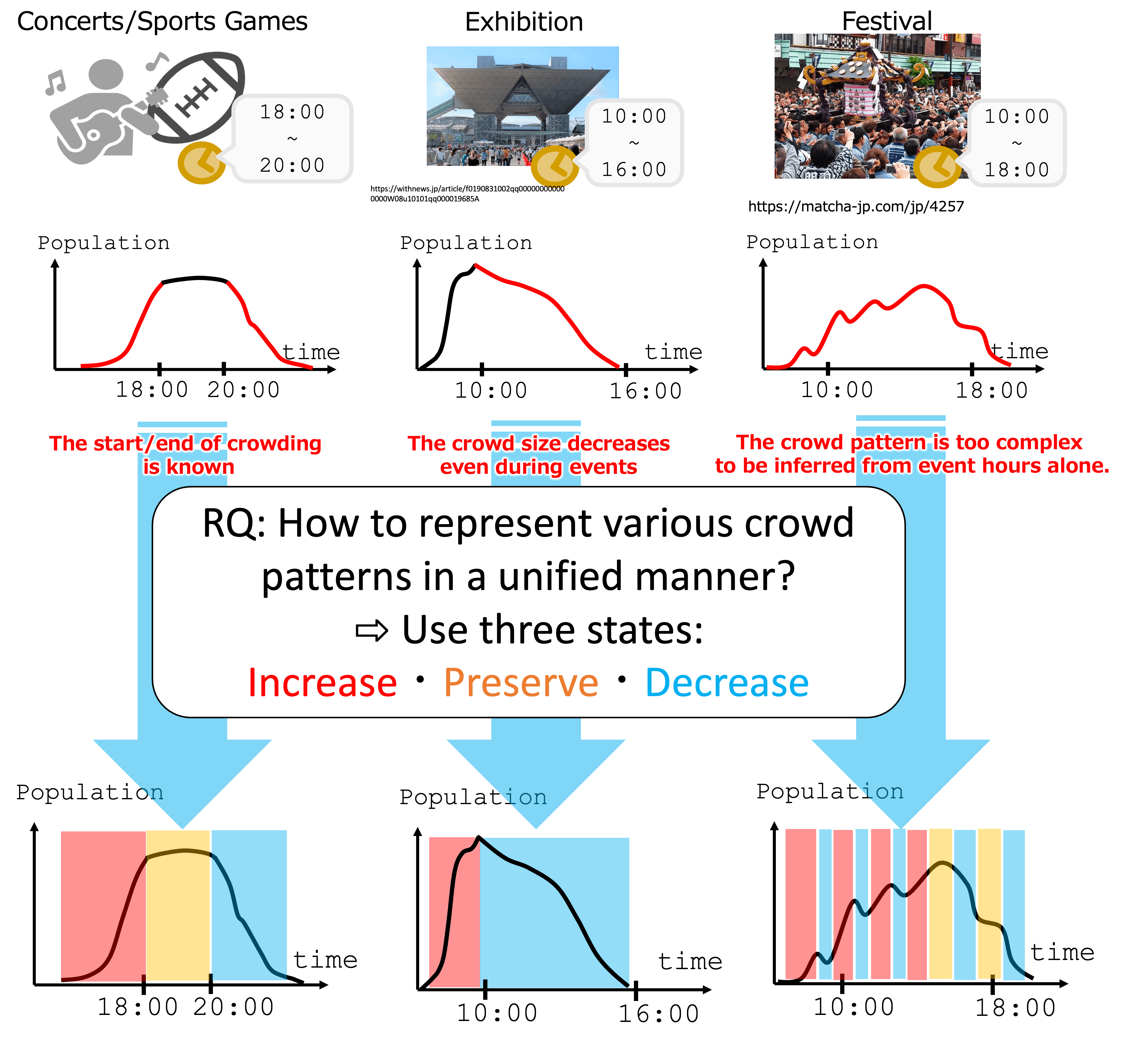Imagine an event held in a city. For example, if the event is a sports game or a concert, the area around the venue will be crowded with visitors at the beginning and end of the event. Forecasting crowding at the beginning of the event can be used as a guideline for users to arrive at the venue comfortably; forecasting crowding at the end of the event can suggest users to use detour routes to return home.
Therefore, forecasting crowding is expected to predict not only its onset, but also its duration and end time. However, existing crowd forecasting methods [Anno@SigSpatial’21, Anno@Pervasive2023] could only forecast the start of congestion. In this project, we will focus on forecasting a crowded event from its onset to its end, which we call Lifespan of Crowded Events (LCE).
Although the start and end times of most events are announced in advance, actual crowding does not always occur as planned; moreover, there are a wide variety of crowding dynamics for different types of events, which makes it difficult to forecast the duration of crowding. For example, at a sporting event, people gather before the event starts and leave after the event ends; on the other hand, at an exhibition event such as a comic market, people gather before the event starts and leave before the event ends. How can we capture such “diversity in crowd dynamics by event type” in a unified framework? This is the research question of this project.
To answer this question, [Anno@SigUbi78; Anno@Access2024] proposes an crowd dynamics modeling by introducing states, inspired by the framework of acoustic synthesizers. Synthesizers, which can generate a wide variety of acoustic sounds, use a unified framework called the ADSR envelope, which consists of four states: Attack (rise), Decay (decay), Sustain (preservation after decay), and Release (release and reverberation). The sound is synthesized by controlling the volume of the sound.
By mapping “instrument = event location” and “ADSR envelope = crowd dynamics of each event,” we can consider that various types of congestion have in common the “increase,” “preservation,” and “decrease” of the population, and that the order of these phases (= states) is determined by the type and location of the event, such as a sports game or an exhibition. The order of these phases (=states) is determined by the type and location of the event, such as a sports game or an exhibition. Based on this finding, we proposed a recurrent neural network-based framework that divides the population dynamics into states according to the location of the event and learns the crowd dynamics according to the state change.
Based on synthetic data that mimics the state-based population change and actual event data, we confirmed that the proposed method can capture the active population transition not only at the start of congestion, but also up to the end of the event more accurately than conventional methods.
Publications
安納 爽響, 坪内 孝太, 下坂 正倫.
混雑の生起・継続・終了を考慮した状態認識型RNNに基づく早期群衆混雑予報.
情報処理学会研究報告 第78回UBI合同研究発表会, 東京都大島町, 5 2023.
S. Anno, K. Tsubouchi and M. Shimosaka,
Forecasting Lifespan of Crowded Events With Acoustic Synthesis-Inspired Segmental Long Short-Term Memory.
IEEE Access, vol. 12, pp. 87309-87322, 2024, doi: 10.1109/ACCESS.2024.3417509.
